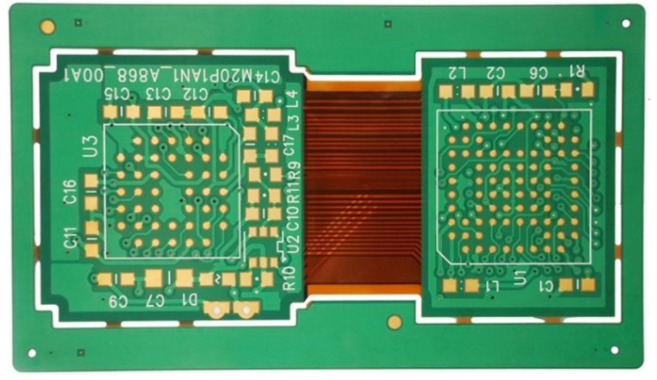The aging and deterioration of the solder joint strength of the circuit board
1. Aging of solder joints
After the welding is completed, the crystalline structure of the main alloy of the solder joint is not stable. It will gradually increase with time to reduce the internal stress caused by many boundaries (usually the boundary is a concentration of impurities, high energy, and stable Degree is very poor). Even at room temperature, the recrystallization temperature required for common eutectic alloys is actually exceeded. As the grain size becomes larger and the boundary becomes smaller, the impurity concentration in the boundary also rises relatively. Once the Fatigue life of the solder joint has been consumed by 25%, there will be Microvoid in the border. And when the fatigue life is consumed by 40%, it will be further deteriorated and Microcrack will be produced, causing the solder joints to become weaker.
Second, the mismatch of CTE
Once the three members (pins, solders, pads) are welded with a large CTE-mismatch drop in the overall thermal expansion coefficient, the deterioration of the solder joint strength will accelerate, for example: the CTE of the ceramic BGA itself is 2ppm/ degree Celsius, But the CTE of the FR-4 circuit board is 14 ppm/ degree Celsius, and the welding strength between the two is not easy to be very good. The following figure shows two obvious examples. As for the localized CTE mismatch also often occurs, such as 17 ppm/°C for copper, 18 ppm/°C for ceramics, and 20 ppm/°C for Alloy42, but the effect of the above-mentioned overall mismatch is of course slightly smaller. Sometimes even the very homogeneous Sn63/Pb37 has an inherent CTE-mismatch of 6 ppm/ degree Celsius in the multi-tin area and multi-lead area (between the two).

3. Examples of failure modes
(1) Cold welding
Refers to the solder paste on the PCB under the ball foot that is not completely fused with the ball due to insufficient heat during the Reflow process. At this time, the spherical surface will have a rough and granular appearance, and the phenomenon of necking will also appear. Usually, the inner ball of the abdominal bottom is more likely to be cold welded.
(2) The soldering pad itself does not stick to tin
It means that the surface of the ball pad in the BGA area of the circuit board is contaminated by foreign matter, so that the solder paste cannot have a soldering reaction with the bottom pad. When the tin cannot be eaten, the solder paste is melted and sucked away by the ball foot and presents an open circuit. However, this phenomenon may sometimes be caused by the bending of the carrier board and the hanging foot. When ENIG is used as the backing surface of the PCB, the same undesirable situation will occur if the nickel layer in it has symptoms of black matting.
(3), drop the ball
Refers to the previous failure of the BGA component, which is reheated during downstream assembly and welding, and is pulled apart from its neck by external force, which is caused by thermal mechanical stress. However, the foot pads of PCB boards are often soldered well and are rarely missing.
(4) A goal conceded
During the process of planting the ball on the carrier board, the foot of the ball was not firmly planted, or the ball was subsequently hit by an external force and the ball was conceded. This kind of shortcoming is easy to be found in X-Ray or system or circuit test (ICT), but if it is only used for heat dissipation or common grounding, it does not matter the inner ball, it is another matter.
(5) Carrier board' bend and warp
In fact, the heat of lead-free soldering in the future will greatly increase. Not only will large PCBs bend and warp, even the organic carrier board itself will not escape the warping deformation, and it will also force the abdominal ball feet to fluctuate with height, as shown in the figure below. For the editor's supplementary explanation.
Although the plate of the carrier board is made of Tg180 BT resin, it is very different from the CTE of the chip contained in the inner package; therefore, when exposed to too much lead-free heat, the carrier board will bend up abnormally, resulting in four corners The ball foot appears to be elongated or the hanging foot hangs in the air. Even if the welding is strong, the welding contact area will be reduced due to stress and elongation, and the strength will be insufficient, making the designer dare not even place the ball pin 1/0 at the four corners. Large BGAs are most prone to this abnormal phenomenon.
(6) Damage from external mechanical forces
The circuit board often suffers accidental damage during assembly or testing, and when the BGA becomes very large, it will also cause trauma to the ball during the test, which will affect the strength of the subsequent solder joints. Even after the PCBA is assembled, it will still be accidentally impacted by external forces, and sometimes even the copper pads on the PCB surface are pulled up and floated off by force. To be on the safe side, base glue or additional corner glue on the four corners can be used as a means of guarantee, or even increase the area of the corner pads or change to oval-shaped long pads. However, because the designer will only use off-the-shelf commercial software, so Law is not easy to implement.
(7) Insufficient welding heat
When the heat absorbed by the ball in the abdominal bottom is insufficient, the ball itself cannot be melted into a liquid state, so that it cannot heal with the solder paste, its shape will be difficult to show the normal state of normal flattening and dwarfing. The following picture is a typical example.